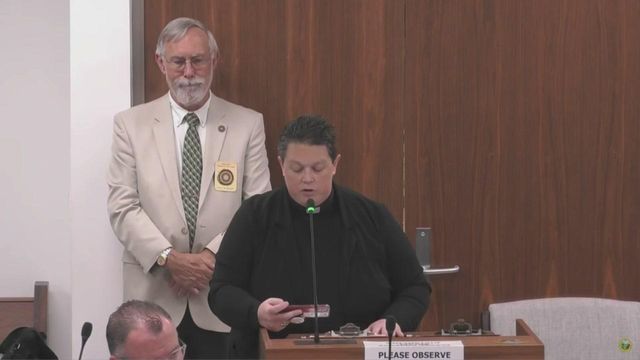CDC Calls On Schools to Reopen, Downplaying Health Risks

WASHINGTON — The nation’s top public health agency issued a full-throated call to reopen schools in a statement that aligned with President Donald Trump’s pressure on communities, listing numerous benefits of being in school and downplaying the potential health risks.
The Centers for Disease Control and Prevention published the statement, along with new “resources and tools,” Thursday evening, two weeks after Trump criticized its earlier recommendations on school reopenings as “very tough and expensive.” His words ratcheted up what was already an anguished national debate over how soon students and teachers should return to classrooms.
“Reopening schools creates opportunity to invest in the education, well-being and future of one of America’s greatest assets — our children — while taking every precaution to protect students, teachers, staff and all their families,” the agency’s new statement said.
Trump, pummeled with criticism over his handling of the pandemic, sees reopening the nation’s schools this fall as crucial to reinvigorating the economy and to his reelection. While many public health experts and pediatricians agree that returning children to classrooms is critically important, they warn that it has to be done cautiously, with a plan based on scientific evidence. They, along with teachers’ unions, have accused the president of putting children and the adults who supervise them at school at risk by politicizing the subject.
The new package of CDC materials began with a statement titled “The Importance of Reopening America’s Schools This Fall” that repeatedly described children as being at low risk for being infected by or transmitting the virus, even though the science on both aspects is far from settled.
But the package is actually a hybrid of sorts. Beyond the political-sounding opening statement, it included checklists for parents, guidance on wearing face coverings, mitigation measures for schools to take and other information that some epidemiologists described as useful. This more technical guidance generally did not counter the agency’s earlier recommendations on school reopenings, such as keeping desks 6 feet apart and keeping smaller-than-usual groups of children in one classroom all day instead of allowing them to move around.
The guidance suggests schools take measures like keeping students in small cohorts, having one teacher stay with the same group all day and using outdoor spaces. It also suggests planning for how to handle when someone in a school tests positive, including developing plans for contact tracing. It also includes strategies to support students of various ages wearing masks. For parents, it suggests checking their children each morning for signs of illness before sending them to school and talking to them about preventive measures.
While most research suggests that children infected by the coronavirus are at low risk of becoming severely ill or dying, how often they become infected and how efficiently they spread the virus to others is not definitively known. Children in middle and high schools may also be at much higher risk of both than those under 10, according to some recent studies, a distinction the opening statement did not make.
The new statement came from a working group convened by officials at the Department of Health and Human Services after Trump made his critical comments. A federal official familiar with the group said it included minimal representation from the CDC, which had already written most of the other material released Thursday.
The official, who spoke on the condition of anonymity, said the Substance Abuse and Mental Health Services Administration, an agency within the Health and Human Services Department, took the lead in writing the statement, which focuses heavily on the positive effects on children’s mental health from going to school.
Experts on the subject at the CDC were cut off from direct communication with the working group after their input on the statement was interpreted as being too cautious, the official said. Instead, the group communicated directly with the office of Dr. Robert R. Redfield, the CDC director, which did seek input from experts at the agency. But the CDC was by no means in charge, the official said.
In a call with reporters Friday, Redfield said that he understood the “trepidation” many parents and teachers were feeling about reopening schools and that decisions should be made based on levels of infection in each community.
The new materials, he said, were not meant to replace the CDC’s earlier guidance on school reopenings but “to really help put some more granular detail in how administrators and parents can begin to think about putting those guidelines into a practical plan.”
Still, he said, “The goal line is to get the majority of these students back to face-to-face learning.”
As the start of the academic year approaches, school districts across the country have been agonizing over whether to reopen in person, or with distance learning or with a combination, often changing their minds from one week to the next. Some, including in Los Angeles and Nashville, Tennessee, have said classes will be fully online to start; others, including in New York City, are planning a mix of in-person classes and days at home. Private schools are wrestling with the same issues.
A poll released this week by the Kaiser Family Foundation found that 60% of parents overwhelmingly prefer that schools wait to restart in-person classes to reduce infection risk. Among parents of color, 76% want schools to delay in-person classes, compared with 51% of white parents. Nine in 10 parents of color said they are either “very worried” or “somewhat worried” about their child getting sick with coronavirus if they return to school in the fall, compared to 55% of white parents. Debate over how fast and fully to reopen schools has engulfed parts of the federal bureaucracy. One 69-page CDC document, obtained by The New York Times earlier this month, marked “For Internal Use Only,” classified as “highest risk” the full reopening of schools, just as the CDC’s earlier guidance on reopening schools does. Its suggestions for mitigating the risk of school reopenings would be expensive and difficult for many districts, like broad testing of students and faculty, and contact tracing to find people exposed to an infected student or teacher.
Redfield told reporters that while the Department of Health and Human Services was responsible for the CDC’s newly published schools statement, the agency believed it was important because “parents and teachers and decision-makers” needed to understand some of the negative consequences of keeping children home. They include putting children at higher risk of “physical, sexual, and emotional maltreatment and abuse,” the statement said, adding that closing schools disproportionately harms low-income and minority children and those with disabilities.
“I don’t think as many parents realize what I’ve tried to say — there really have been substantial negative public health consequences for children not being back in school,” Redfield said.
In a separate public appearance Friday, Dr. Anthony S. Fauci said the country should try “as best as we possibly can” to keep children in school but stressed that protecting students and staff members “absolutely has to be paramount.”
Anita Cicero, deputy director of the Johns Hopkins Center for Health Security, described the CDC’s new statement as a “sales job.” While the new guidance was largely sound, she said, it should have gone further in helping Black, Hispanic and low-income families, which have been hit hardest by the virus, make decisions about whether it is safe to return to the classroom.
“They have the most to gain from going back to school but also the very most to lose,” she said. “That is an area where CDC should be providing a lot more guidance about how do you manage that risk?”
Asked on the call about the many hot spots around the country right now and whether it would be appropriate for communities with high levels of virus transmission to open schools, Redfield downplayed the extent of local outbreaks.
“A majority of the nation right now act has positivity rates that are less than 5%, so clearly there’s many parts of our nation that are having infection rates that would not be inconsistent with our guidance,” he said.
But of the nation’s 10 largest school districts, only New York City and Chicago appear to have achieved such low positivity rates, according to a New York Times analysis of city and county-level data. Some of the biggest districts, like Miami-Dade County in Florida and Clark County, Nevada, which includes Las Vegas, are in counties that have recently reported positive test rates more than four times as great as the 5% threshold, the data shows. Dr. Ashish Jha, director of the Harvard Global Health Institute, said the new guidance was thin on facts of what parents and teachers care most about — clear information on the risks to children of all ages, as well to school staff.
He noted that the guidance did not mention a testing strategy and dismissed the importance of screening children for symptoms.
“It doesn’t seem to me that they have much in the way of a strategy to prevent infections,” Jha said. “I think that’s hugely problematic.”
Another passage stated that even in communities with “substantial, uncontrolled transmission, schools should work closely with local health officials to make decisions on whether to maintain school operations.” But for a community with that kind of outbreak, the agency separately recommends that people “shelter in place.”
“It’s nonsensical that you would ask a community to shelter in place but keep schools open,” Jha said.









